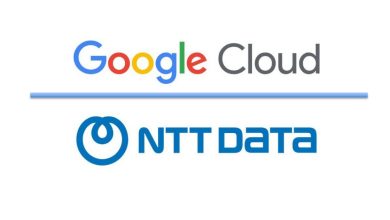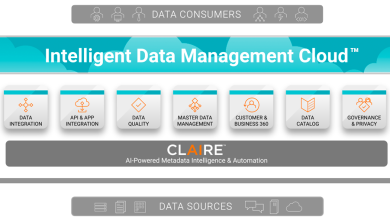
Go to the cloud, they said. You will save big when you’re there, they said.
That is the promise of using the cloud . . . or, at least, that is what cloud vendors and cloud proponents would want you to believe. That is a familiar refrain, an oft-repeated enticement to persuade key decision-makers to actually commit to it.
Unfortunately, in some cases, that promise is never realised. In fact, a few companies have found out the hard way that the cost-benefit of leveraging the cloud is not always as advertised.
 “Many organisations make the shift to the cloud with a view to saving money. Instead of a significant upfront investment in on-premises infrastructure, cloud costs are distributed over time and easily scalable to demands,” said Mohan Krishnan, Vice President and General Manager, HPE GreenLake Cloud Business, Advisory & Professional Services and Presales, at HPE Asia Pacific. “However, for companies that don’t have good visibility and understanding over their public cloud usage, the opposite may be true as they find their cloud spending spiralling out of control.”
“Many organisations make the shift to the cloud with a view to saving money. Instead of a significant upfront investment in on-premises infrastructure, cloud costs are distributed over time and easily scalable to demands,” said Mohan Krishnan, Vice President and General Manager, HPE GreenLake Cloud Business, Advisory & Professional Services and Presales, at HPE Asia Pacific. “However, for companies that don’t have good visibility and understanding over their public cloud usage, the opposite may be true as they find their cloud spending spiralling out of control.”
 Robert Yang, Regional Vice President for Asia-Pacific Sales at Seagate, shared the same sentiment, noting how “some companies have been disappointed due to the unpredictable cloud storage cost structure driving the cost up.” Further complicating matters, according to Yang, is the continuing explosion of data, which is making it harder for organisations “to understand what data they can use to generate business value” and leaving companies with boatloads of data that is never fully leveraged—and cloud use that is not at all maximised.
Robert Yang, Regional Vice President for Asia-Pacific Sales at Seagate, shared the same sentiment, noting how “some companies have been disappointed due to the unpredictable cloud storage cost structure driving the cost up.” Further complicating matters, according to Yang, is the continuing explosion of data, which is making it harder for organisations “to understand what data they can use to generate business value” and leaving companies with boatloads of data that is never fully leveraged—and cloud use that is not at all maximised.
The Cautionary Tale of 37Signals
Companies are by and large tight-lipped when it comes to reporting about their spending, so finding organisations that have overspent on the cloud has proven to be challenging. Fortunately, David Heinemeier Hansson, CTO at 37Signals, was candid enough to go public with the firm’s experience with exorbitant cloud costs. Hansson bared that 37Signals, which operates Basecamp and Hey, among others, incurred massive cloud bills, prompting the company to leave the cloud entirely in October 2022.
Hansson’s computations show 37Signals paying USD $266,797 a month for its cloud use, which translated to an eye-popping USD $3,201,564 bill for 2022. Of that bill, USD $759,983 was for computing alone—nearly 200 times more costly compared to the $46,366 37Signals would have spent had it just purchased servers with 288 vCPUs, again as computed by Hansson.
And, evidently, that USD $3,201,564 bill could have been a lot higher, according to Hansson, had his ops team at 37Signals not made a concerted effort to keep the bill as low as they could.
“Getting this massive spend down to just USD $3.2 million has taken a ton of work,” Hansson admitted. “The ops team runs a vigilant cost-inspection program, with monthly reporting and tracking, and we’ve entered into long-term agreements on reserved instances and committed usage, as part of a Private Pricing Agreement. This is a highly optimised budget.”
If USD $3.2 million a year is already optimised, then imagine how much higher it would have been with no optimisations whatsoever.
Not All That Bad
 In all fairness to the cloud, though, it is not necessarily a resource black hole every time, all the time. Hansson himself admitted in a blog that the cloud makes perfect sense in certain instances—in particular, when a business has simple, uncomplicated apps on low traffic and when the company’s load is “highly irregular,” when baselines are highly malleable and usage swings are common.
In all fairness to the cloud, though, it is not necessarily a resource black hole every time, all the time. Hansson himself admitted in a blog that the cloud makes perfect sense in certain instances—in particular, when a business has simple, uncomplicated apps on low traffic and when the company’s load is “highly irregular,” when baselines are highly malleable and usage swings are common.
Darrell Goh, Head of Sales, Southeast Asia, at Xtremax, swears by the wisdom of leveraging the cloud, as does David Chan, Managing Director, Singapore, at Adnovum.
“An increasing number of companies are building in the cloud as it offers the promise of greater flexibility, scalability and agility,” Goh told Data&Storage ASEAN (DSA) in an exclusive email interview. “They can very quickly and easily scale resources and storage to meet business demands without having to invest in physical infrastructure. From the standard computing and storage to more advanced solutions like Artificial Intelligence and Machine-Learning, the cloud has a lot to offer.”
 Chan agrees, which may explain why cloud adoption is on the rise, particularly in Asia, where it accounts for 14% of global cloud spending. Among the benefits of using the cloud, according to Chan, is enhancing productivity, along with reducing the costs needed for sizable hardware investments and regular maintenance associated with on-premises infrastructure.
Chan agrees, which may explain why cloud adoption is on the rise, particularly in Asia, where it accounts for 14% of global cloud spending. Among the benefits of using the cloud, according to Chan, is enhancing productivity, along with reducing the costs needed for sizable hardware investments and regular maintenance associated with on-premises infrastructure.
The Mixed Bag That Is the Cloud
Then again, both Goh and Chan admit that cloud costs can potentially skyrocket, with cloud spending, according to Chan, estimated to grow to USD $591.8 billion in 2023—considerably higher than USD $490.3 billion in 2022.
“This increase in cloud spending could be largely due to inefficient management of the cloud. Organisations may not have assessed workloads fully, resulting in incomplete specification of migration requirements,” explained Chan. “Additionally, companies may have failed to consider indirect project costs—costs needed to reskill existing teams, adopt agile practices across the IT organisation and make changes to organisational structure and operating procedures.”
Goh mostly agreed with Chan, pointing out how complex pricing mechanisms and a lack of understanding of how to manage cloud resources often lead to spiralling costs, making the cloud a more expensive option to on-prem infrastructure.
HPE’s Krishnan has his own explanations as to why organisations burn through their cloud budgets.
“A leading cause of cloud overspending is decentralised cloud usage where different groups within an organisation purchase and use cloud services without a central way of controlling spending,” Krishnan pointed out. “The sheer number of cloud services also makes it difficult to keep tabs on the different associated costs. Lastly, data ingress and egress charges will cause public cloud bills to grow over time, as opposed to the fixed, predictable costs of an on-premises environment.”
 Jeffrey Neo, Managing Director, Southeast Asia & Korea, at Micro Focus, added: “Multiple factors can drive up costs for both environments [on-prem and cloud] no matter the upfront cost. For instance, technological advancements can rack up costs for on-prem infrastructures due to the need to regularly update hardware. At the same time, expanding cloud services are resulting in increased demand, which can also lead to spiralling costs.”
Jeffrey Neo, Managing Director, Southeast Asia & Korea, at Micro Focus, added: “Multiple factors can drive up costs for both environments [on-prem and cloud] no matter the upfront cost. For instance, technological advancements can rack up costs for on-prem infrastructures due to the need to regularly update hardware. At the same time, expanding cloud services are resulting in increased demand, which can also lead to spiralling costs.”
 For Matthew Lynn, Director of Cloud Compute, Asia Pacific and Japan, at Akamai Technologies, the explanation is much simpler: Organisations just outright underestimate the cost of their cloud journey, resulting in them “burning through budgets in a fraction of the time expected.”
For Matthew Lynn, Director of Cloud Compute, Asia Pacific and Japan, at Akamai Technologies, the explanation is much simpler: Organisations just outright underestimate the cost of their cloud journey, resulting in them “burning through budgets in a fraction of the time expected.”
Whatever the case may be, using the cloud per se doesn’t guarantee big savings. Neither does it automatically lead to big spending.
Controlling Costs Takes a Bit of Work
While Hansson’s team at 37Signals failed to keep their cloud spending reasonable, it does not mean it is not possible. But, as the experts that DSA all point out, doing so would take a lot of work—and it begins even before any migration is carried out.
 “Businesses need to consider multiple factors in their digitisation strategy and cloud adoption, such as total cost of ownership, infrastructure and application architectures, security and user experience,” explained Simon Lewry, Head of Technology Solutions & Services, South Asia, Telstra. “While there can be benefits with a rehost of on-premises virtual machines, such as removing data centre and infrastructure dependencies, this should be seen as one strategic approach. As such, businesses need to develop a detailed application roadmap encompassing the 4Rs (Rehost, Refactor, Redesign and Rearchitect), as opposed to a one-size-fits-all approach.”
“Businesses need to consider multiple factors in their digitisation strategy and cloud adoption, such as total cost of ownership, infrastructure and application architectures, security and user experience,” explained Simon Lewry, Head of Technology Solutions & Services, South Asia, Telstra. “While there can be benefits with a rehost of on-premises virtual machines, such as removing data centre and infrastructure dependencies, this should be seen as one strategic approach. As such, businesses need to develop a detailed application roadmap encompassing the 4Rs (Rehost, Refactor, Redesign and Rearchitect), as opposed to a one-size-fits-all approach.”
Strategic planning is something Adnovum’s Chan is also emphasising if businesses want to benefit from using the cloud but without spending an arm and leg. This strategic planning, according to Chan, must include a thorough analysis of the current infrastructure’s resources and workflows, as well as access to analytics and monitoring tools that can help the business determine actual resource usage, predict the resources needed in the future and gain full visibility of cloud use and spending.
“With full visibility, organisations can accurately size resources and create adequate buffer capacity to meet workload requirements, enabling them to deploy or remove resources to make the most efficient use of infrastructure,” Chan explained. “It also prevents them from getting caught up in the details of implementing new systems of procedures, resulting in unnecessary costs, resource misallocation and unmanageable IT infrastructure. It is through thoughtful, targeted cloud migration that businesses can reduce costs, build value, and improve productivity and efficiency.”
The Right Tools and Cloud Vendor Matter
Ultimately, finding the right partner is just as crucial to keeping cloud costs down. Xtremax’s Goh, in fact, highlights this need, in particular, noting how “there is no silver bullet to this issue but working with a credible partner to start off on the right footing.” In this way, Goh explained, companies will be in a better position not only to avoid unnecessary costs in the future but also to use the cloud in enabling agility, driving innovation and accelerating business growth.”
Organisations need to be aware of the cost-control features cloud vendors may be offering, noted Kun Huang, General Manager, Malaysia, at Alibaba Cloud. And he recommends one pricing control mechanism, in particular, that can help a company control cloud spending.
“Companies should look for cloud providers that can offer the benefits of Elastic Compute Service (ECS) and adhere to the recommended cost management solutions,” said Huang. “These solutions can maximise cost-effectiveness and ensure rapid business development. Companies should monitor the resources from multiple aspects, pinpoint reasons for high costs and take specific optimisation measures. These can be done via resource usage monitoring, appropriate instance types of selection, multiple billing methods combination and elastic auto-scaling capability.”
On top of all that must be a traditional cost management platform, said Goh, as it provides a centralised location to monitor and manage cloud spending, as well as other critical features, like cost forecasting, budgeting and usage tracking. All this, according to Goh, enables organisations to gain visibility into their cloud spending, identify areas where costs are excessive and take steps to optimise their resources and usage. More advanced tools such as Nimbus Stream are also available, offering real-time data for optimal cost management for even more comprehensive statistical analysis of cloud costs.
To Cloud or Not to Cloud?
So, should a company leverage the cloud or not?
Well, it depends, and the choice to either go to the cloud or stay on-prem will primarily hinge on a company’s data-related needs.
 “It is important to find a balanced approach when looking at cost, security, and scalability factors when choosing between on-prem or cloud-based infrastructure. On-prem is often cost-effective for companies that have large amounts of data or require great deals of computing power,” explained Chua Chee Pin, Area Vice President, ASEAN, Hong Kong, Japan, Korea and Taiwan, at Commvault. “However, higher costs come with protecting and storing this data in-house. Enterprises that require less storage tend to adopt pay-as-you-go pricing cloud models and invest less in infrastructure but this brings increased data risk and complications related to data recovery without the right tools.”
“It is important to find a balanced approach when looking at cost, security, and scalability factors when choosing between on-prem or cloud-based infrastructure. On-prem is often cost-effective for companies that have large amounts of data or require great deals of computing power,” explained Chua Chee Pin, Area Vice President, ASEAN, Hong Kong, Japan, Korea and Taiwan, at Commvault. “However, higher costs come with protecting and storing this data in-house. Enterprises that require less storage tend to adopt pay-as-you-go pricing cloud models and invest less in infrastructure but this brings increased data risk and complications related to data recovery without the right tools.”
To that end, Seagate’s Yang reminded IT decision-makers that businesses must understand first that storing every single piece of data is not the magical solution to business innovation. Instead, Yang offered this advice: “Organisations should clearly grasp their business goals and, from there, determine the data required to gain the insights necessary to drive the business towards said goals. This means that data ops should be at the core of the business decision, not just IT, in building a successful and cost-effective data infrastructure.”
 Whatever these identified goals, the goal is to ultimately build a flexible and scalable environment that will best help the company realise said goals. That environment could be purely in the cloud or solely on-prem. Or it could be a bit of both in a hybrid setup, which might be ideal.
Whatever these identified goals, the goal is to ultimately build a flexible and scalable environment that will best help the company realise said goals. That environment could be purely in the cloud or solely on-prem. Or it could be a bit of both in a hybrid setup, which might be ideal.
“A hybrid IT model with the right combination of public cloud, colocation and on-premise deployments helps businesses gain control, with options to utilise the best infrastructure for their workloads,” said Govind Choudhary, Head of Service Provider and Market Strategy, Asia Pacific, Digital Realty, about the benefits of a hybrid environment.
Regardless of the choice of the environment—on-prem, in the cloud, or hybrid—keeping IT spending in check will take a lot of work and strategising. Otherwise, costs will balloon uncontrollably, as was the case with 37Signals.
Take this intelligent assessment to determine whether your business is benefitting from a modernised storage strategy. Answer these simple questions and immediately get a custom detailed whitepaper that will highlight key areas where you can improve your storage strategy, emailed directly to you.





